Cards In This Set
| Front | Back |
|
Phylum Annelida
|
|
|
Class Polychaeta
|
sand worms, tube worms, clam worms, and others
(Figure 2). With numerous setae
(chaetae) on the trunk segments; most with well developed parapodia; prostomium
and peristomium usually bear sensory organs (palps, tentacles, cirri) or
extensive feeding and gas exchange tentacular structures; foregut often
modified as eversible stomodeal pharynx (proboscis), sometimes armed with
chitinous jaws; reproductive structures simple, often transient; without a
clitellum; most are gonochoristic; development often indirect, with a
free-swimming trochophore larva; mostly marine; burrowers, errant, tube-
dwelling, interstitial, or planktonic; some live in brackish water, a few
inhabit fresh water or are parasitic
|
|
Sister Taxa
Scolecida (Class Polychaeta)
|
|
|
Family Arenicolidae(Sister Taxa Scolecida;Class Polychaeta)
|
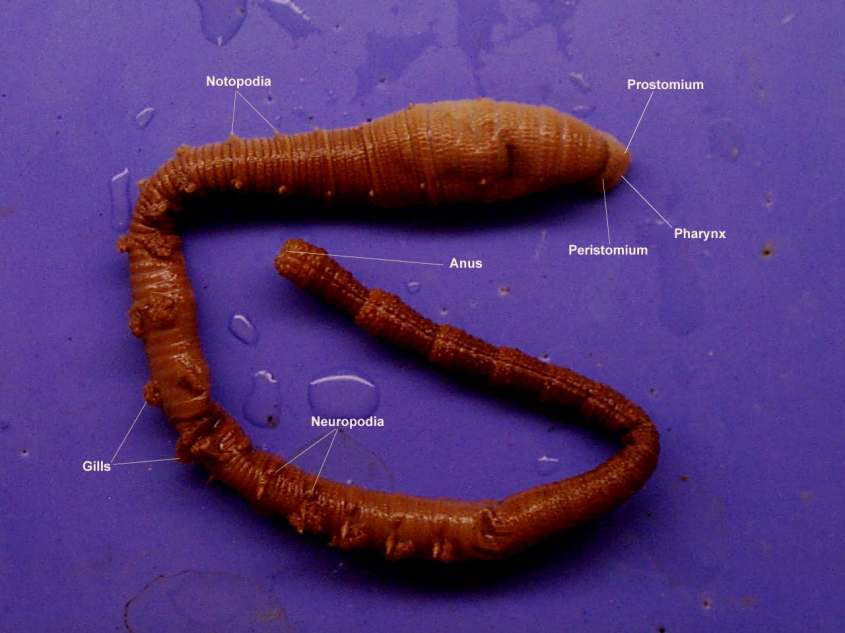 The so-called lugworms have a rather thick, fleshy, heteronomous body divided into two or three distinguishable regions; pharynx unarmed but eversible and aids burrowing and feeding; live in intertidal and subtidal sands and muds in J-shaped burrows; direct deposit feeders |
|
Family Maldanidae(Sister Taxa Scolecida;
Class Polychaeta)
|
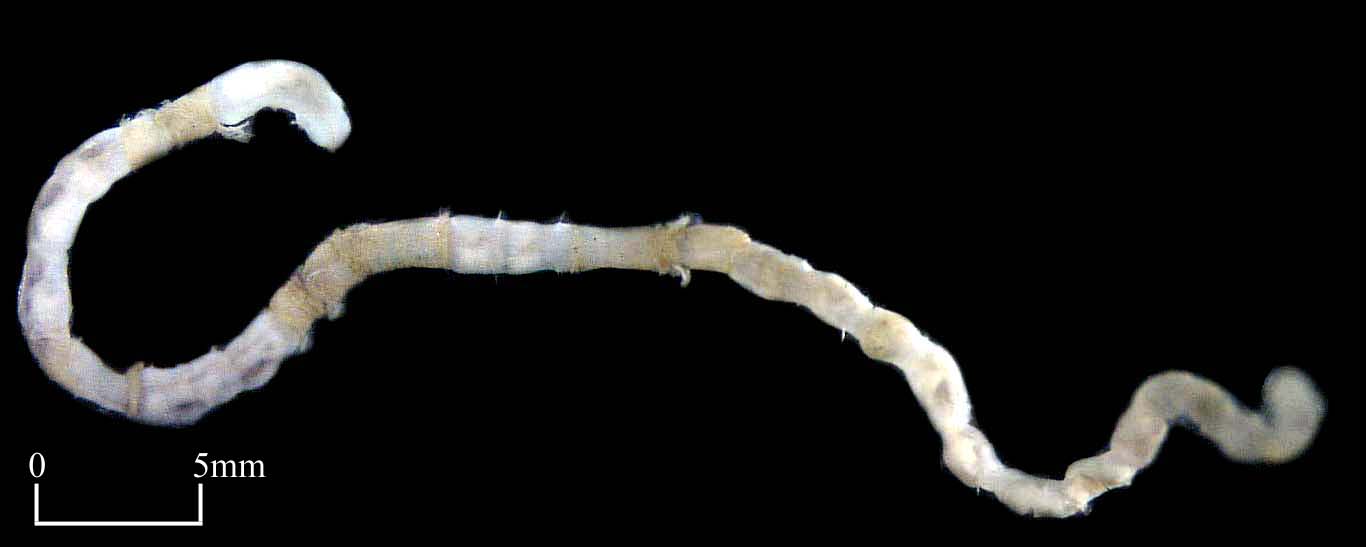 Body elongate and homonomous except that some mid-trunk segments are elongate, hence the common name of "bamboo worms"; burrow head downward and secrete a mucous sheath to which sand particles adhere, thereby forming a tube; proboscis unarmed by eversible and used in burrowing and selective deposit feeding. |
|
Sister taxa Palpata
(Class Polychaeta)
|
with a pair of sensory palps on the prostomium
|
|
Family Glyceridae (Sister taxa Palpata;
Class Polychaeta)
|
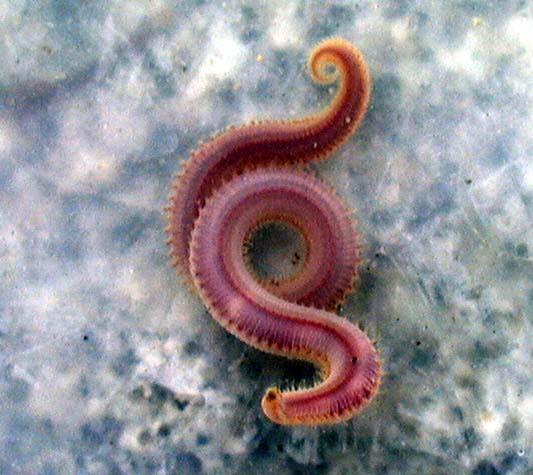 Long, cylindrical, tapered, homonomous body; enormous pharynx armed with four hooked jaws used in prey capture; large pharyngeal proboscis also used in burrowing; most are infaunal burrowers in soft substrata |
|
Family Nereidae(Sister taxa Palpata;Class Polychaeta)
|
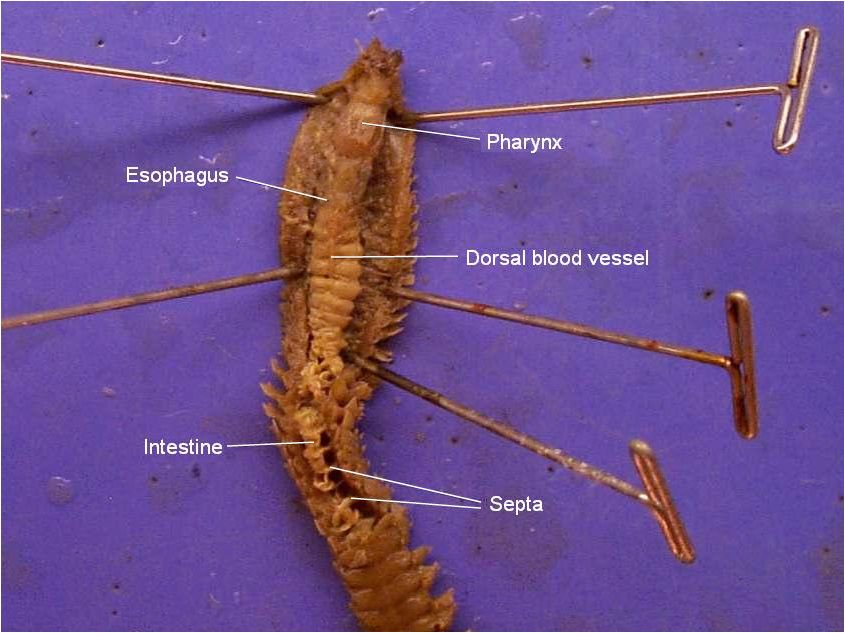 Moderate to large polychaetes tending to homonomy; mostly errant predators with well developed parapodia; one pair of large curved pharyngeal jaws; some burrow, but most are epibenthic in protected habitats: among mussel communities, in holdfasts of algae, crevices, under rocks, et. (Internal anatomy) |
|
Family Nereidae(Sister taxa Palpata;Class Polychaeta)
|
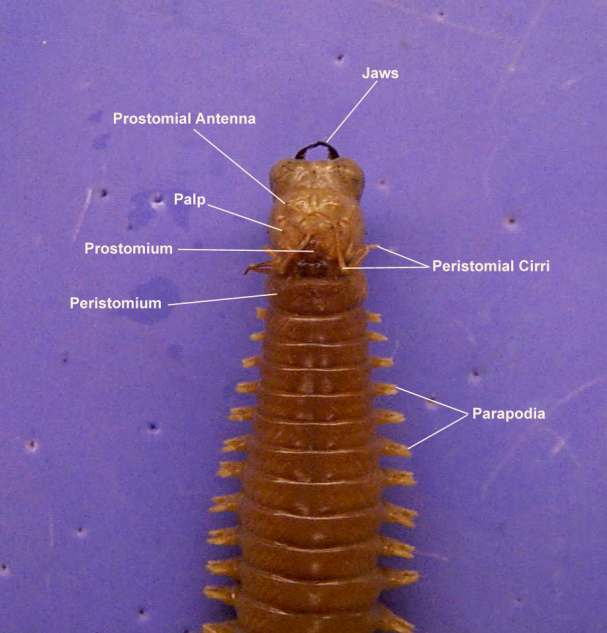 External Anatomy |
|
Family Aphroditidae(Sister taxa Palpata;Class Polychaeta)
|
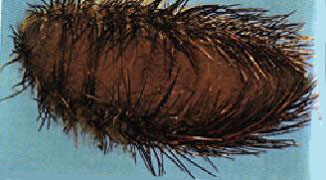 Body broad, oval or oblong, with less than 60 segments; with flattened, solelike ventral surface, and rounded dorsum covered with scales (elytra) overlaid by a thick felt- or hairlike layer, giving some the common name of "sea mouse"; slow moving, epibenthic or burrowers; most are omnivorous |
|
Sister Taxa Canalipalpata(Class Polychaeta)
|
|
|
Family Chaetopteridae (Sister Taxa Canalipalpata;Class Polychaeta)
|
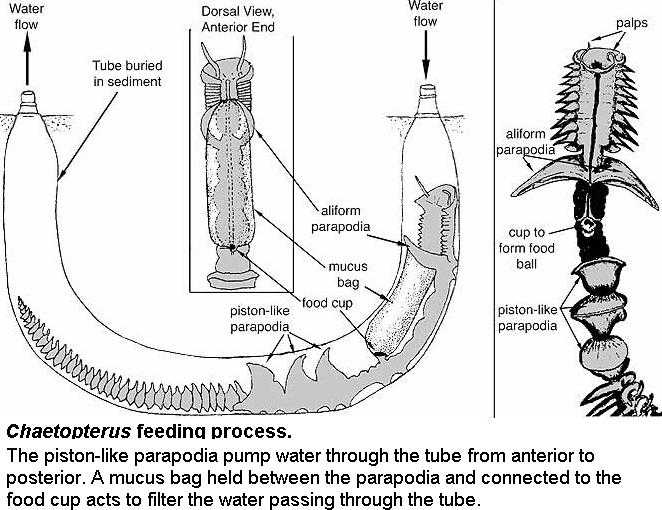 Body fleshy, relatively large and distinctly heteronomous, divided into two or three functional regions with modified parapodia; chaetopterids live in more-or- less permanent U-shaped burrows lined with secretions from the worm, most are mucous-net filter feeders, eating plankton and detritus passed through the tube by water currents |
|
Family Terebellidae (Sister Taxa Canalipalpata;Class Polychaeta)
|
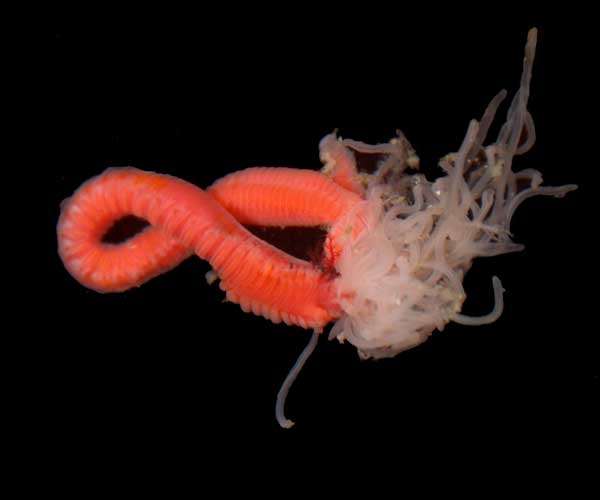 Moderate-sized tube-dwelling polychaetes with fragile, fleshy bodies; heteronomous; body of two distinct regions; most lack eversible pharynx; most live in various types of permanent tubes (e.g., mud, sand, shell fragments); head bears numerous elongate feeding tentacles; most with 1-3 pairs of well developed branchiae on anterior trunk segments; feed on surface detritus |
|
Family Sabellidae(
Order Sabellida; Sister Taxa Canalipalpata;Class Polychaeta)
|
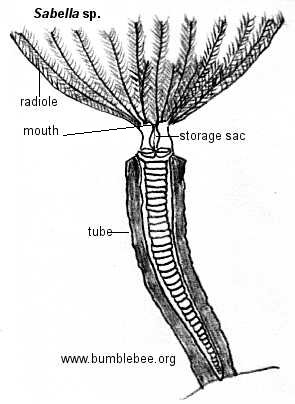 Tube-dwelling polychaetes commonly called "fan worms" or "feather-duster worms"; body heteronomous, divided into two regions similar to those of terebellids; pharynx unarmed and noneversible; peristomium bears a classy crown of branched, feathery tentacles that projects from the tube and functions in gas exchange and ciliary suspension feeding. |
|
Family Serpulidae(Order Sabellida; Sister Taxa Canalipalpata;Class Polychaeta)
|
Heteronomous body divided into two regions; tube
dwellers; anterior end bears a tentacular crown as in sabellids, plus a
funnel-shaped operculum that can be pulled into the end of the calcareous tube
when the worm withdraws; ciliary suspension feeders.
|



